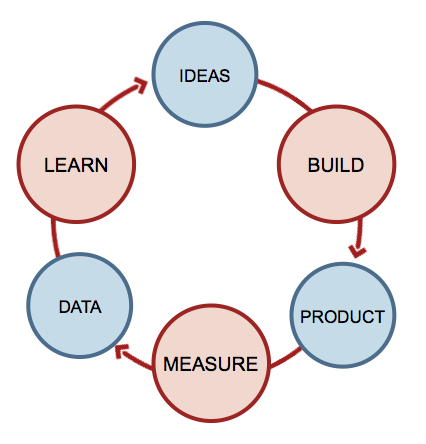Lean startup is a methodology increasingly adhered either by new entrepreneurs and startups or by established companies. These seek to optimize your method development. The main idea behind this method is to avoid wasting resources (time and money) in product development by launching prototypes with minimal functionality (MVP) for the first customers in order to validate or invalidate, as soon as possible, hypotheses about the market.
The feature that most distinguishes one startup any other type of business is risk. Starting an innovative business can be daunting for entrepreneurs. It was with this in mind that Eric Ries He wrote his famous book "The Lean Startup”, Which quickly made this methodology known and used worldwide. This concept is based on Ries' experiences as an entrepreneur, consultant and founder of startups e no Lean Manufacturing.
His first startupCatalyst Recruiting failed because the team was too focused on launching a perfect product. Consequently, when it reached the market, it did not correspond to the consumer's real needs. After that, Eric also worked as a software engineer at There Inc with $ 40 million in funding and around 200 employees. After launching on the market, the project failed to garner the desired fame and ended up generating huge losses.
From these experiences, Eric began to develop the concept of Lean Startup based on the Lean Manufacturing philosophy, developed in the 1980s by Japanese auto manufacturers. This system considered the expenditure of resources for any purpose other than the creation of value for the final customer as a waste and, therefore, a target to be eliminated. The potential of adapting this context to entrepreneurship was visualized and, currently, it is known and used in this environment.
Metodologia Build-Measure-Learn
The Build-Measure-Learn is one of the principles of Lean Startup. This structure allows to establish and continuously improve the efficiency of products, quickly and economically. So, they find a Business model sustainable for startups.
In practice, this method consists of three distinct phases. This cycle consists of creating and testing hypotheses. It starts with something small so that potential customers can experiment (BUILD), measure their reactions with the aid of metrics (MEASURE) and learn from the results obtained in these measurements (LEARN). This process often requires entrepreneurs to change their minds or even their markets.

Ciclo Learn-Build-Measure do Método Lean Startup (Fonte: https://medium.com/@fgmoribe/lean-startup-mvp-além-da-validação-inicial-9c8c5857808)
Build
In the first phase, BUILD, a minimum viable product (MVP) is created. In other words, a product with minimal functionality that allows testing the entrepreneur's hypothesis. The purpose of this is to attract potential customers, who will be those people who will want to buy or purchase the product as soon as it is officially launched on the market. Once the MVP is on the market, you must collect the data using metrics appropriate for the purpose.
Measure
In the second phase, MEASURE, there is the analysis and interpretation of the data collected in the previous phase.
Learn
Thus, in the last phase, LEARN, the entrepreneur can make conscious decisions. If the hypothesis has been verified and accepted by the market, the entrepreneur will preserve the idea, continuing with the same objectives and repeating the feedback cycle in order to continuously improve and refine this, if necessary. Otherwise, if the hypothesis has been refuted, the entrepreneur will elaborate a pivot, redefining or correcting his idea with the real knowledge he acquired in the first cycle and, repeating this process until the idea is approved by the market.
Ries believes that the feedback from consumers during product development it is essential to ensure that resources are not spent on features that it does not need or does not give importance to. In addition, it serves to make the necessary adjustments to match the real needs of its consumers. Following this method, if an idea has to fail, it will fail quickly and cheaply, instead of slow and expensive, as it would imply following the traditional method.
Compared to the traditional method
According to the traditional administrative method, the first step the entrepreneur must take is to creating a business plan. In this, you should analyze in as much detail as possible the size of the market, which are the strategies to enter this market, which are the competitors, how will revenue and profits be generated. All this information is supported especially by statistical data. However, when the business involves innovation, these data do not always exist.
The strategy adopted in the traditional model is based on implementation using the business plan as a support. On the other hand, in the model Lean Startup It is used more strategy based on hypotheses with the aid of business model. Here, the main concern is to meet the real needs of customers.
This means that the traditional process takes longer as it only works when you have collected all the data for the action. The Lean Startup operates only with sufficient data for the action.
Another difference between these methods is in the creation of the product. While in the traditional, it is prepared and launched on the market only when it is perfect, in the lean the product is launched as soon as possible on the market and the hypothesis is tested and adapted according to the feedback collected.
This new methodology helps new entrepreneurs and startups launching products that customers really want. This results in faster and lower cost than traditional methods. In addition, it allows for greater productivity and a closer relationship with customers, valuing their opinions.
